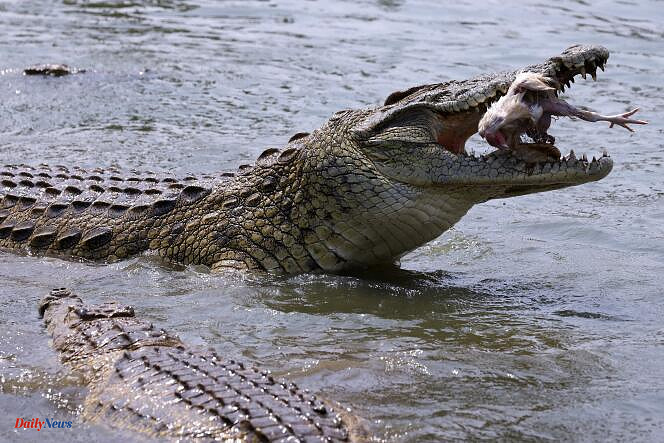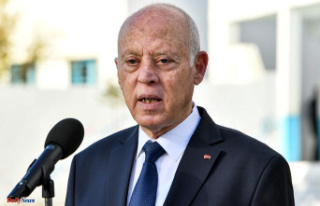With a cry, a frail chicken is thrown into the air and ends up in the impressive mouths of the "president's caimans", devoured alive before the eyes of tourists and supporters who came to Yamoussoukro, the capital of Ivory Coast, for the African Cup of Nations. Cleopatra had her sacred crocodiles, Yamoussoukro relies on her 300 saurians collected by former president Félix Houphouët-Boigny (1905-1993). They are the main attraction of the city with the monumental Basilica of Our Lady of Peace, a replica – but larger – of Saint Peter's in Rome.
Coming to support the Lions of Senegal, Ousmane Kâ, pink checkered shirt and black cap, “takes the opportunity to do a little sightseeing, particularly to visit the famous Cayman Lake” which adjoins the former president’s palace. “It was an opportunity for me to see them go out, be fed with chickens that the public threw at them,” he adds to AFP.
Every day with the influx of visitors for the CAN, poultry are launched to the Caymans. You tap a coin on the iron railing to attract the monsters, who advance onto the bank and bite them mercilessly. “It’s quite a story,” says Guy Michel Goumezo, an Ivorian visiting the capital. The birthplace of the father of Ivory Coast’s independence (1960) “is there behind. It was his village and at the same time his home, where he built his presidential palace.”
With broad shoulders in a khaki t-shirt, he extends his arm towards the domain of the “Old Man”, as it is affectionately called in Ivory Coast, hidden behind the imposing surrounding wall and guarded by the Cayman Lakes. . This is where the village of Houphouët, N’Gokro, became the political capital of the country. The elders also remember that sometimes the president himself would feed them.
A guardian devoured
For Marie Akou, a resident of Yamoussoukro, with big glasses and short hair, Cayman Lake “means a lot”. “According to our Baoulé customs [one of the main ethnic groups of Ivory Coast], you can come and stop and explain your problem, your wishes and the lake can resolve them for you,” she explains.
Augustin Thiam, great-nephew of Houphouët-Boigny, confirms the “mystical” side of the place. “I sometimes sacrifice animals to them, chickens, oxen, sheep, other members of the family do it too,” says the man who is now the governor of Yamoussoukro. The crocodiles “bathed in this water which, for the Baoulé of Yamoussoukro, is sacred”, he recalls, and when one of them dies “we give it a human burial”, he continues.
From the large marble hall of the Houphouët foundation, it retraces the history of the place. The first crocodiles were offered by the President of Mali, Modibo Keïta, in 1961. Others followed, donations from his Malagasy counterpart Philibert Tsiranana or Cameroonian Ahmadou Ahidjo. But Augustin Thiam warns: “The city’s lakes communicate with each other, crocodiles pass by when they are small and there are them in all the lakes. »
No one therefore risks swimming in the water bodies of Yamoussoukro. And since the tragic death of “old Diko”, who was responsible for feeding the crocodiles – devoured by one of them in 2012 – “the other keepers no longer come”, concedes the governor.












